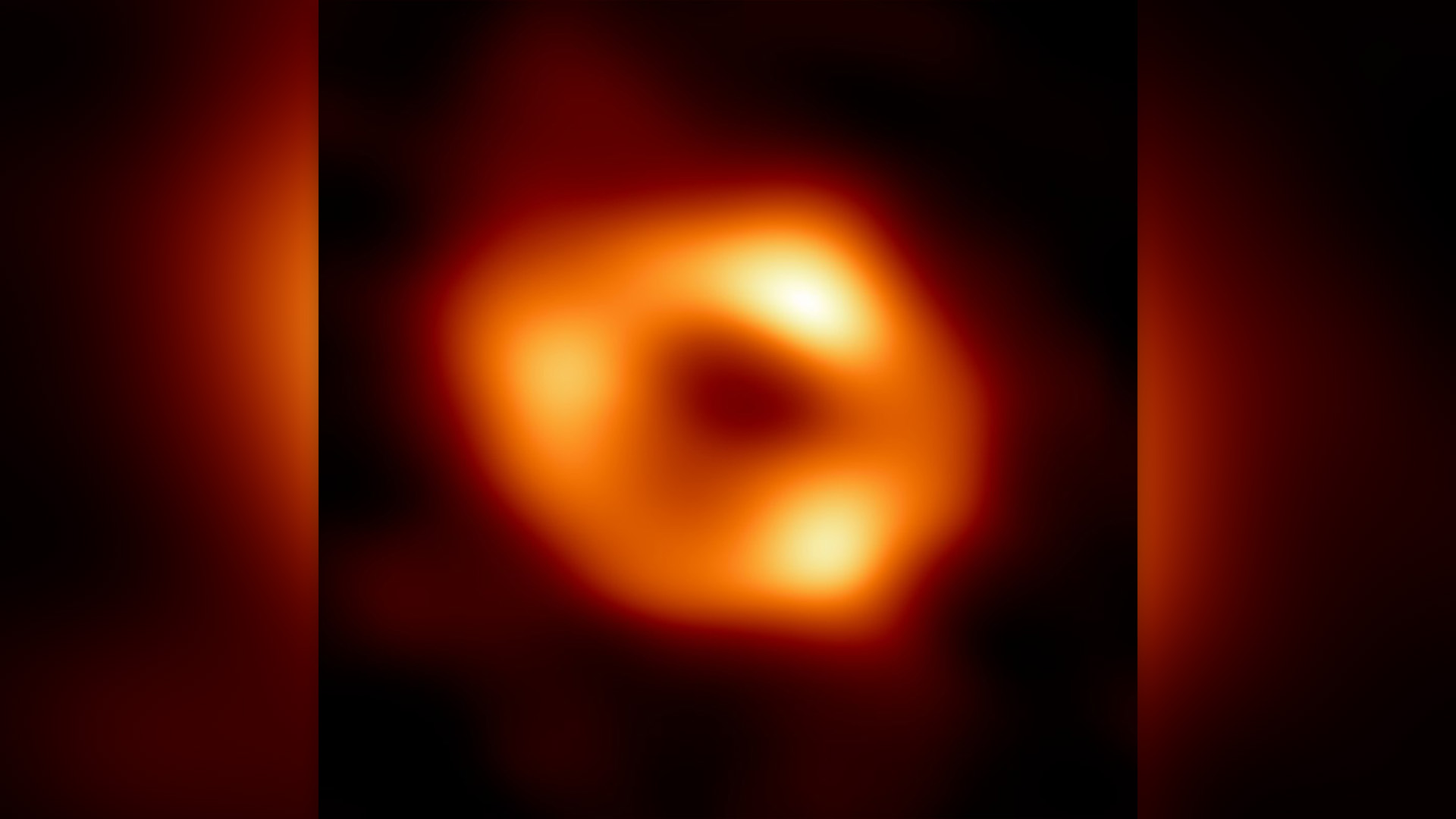
The supermassive black hole at the heart of our galaxy isn't just spinning — it's doing so at almost maximum speed, dragging anything near it along for the ride.
Physicists calculated the rotational speed of the Milky Way's supermassive black hole, called Sagittarius A* (Sgr A*), by using NASA's Chandra X-ray Observatory to view the X-rays and radio waves emanating from outflows of material.
The spin speed of a black hole is defined as "a" and given a value from 0 to 1, with 1 being the maximum rotational speed to a particular black hole, which is a significant fraction of the speed of light. Ruth A. Daly, a physicist at Penn State, and colleagues found that the rotational speed of Sgr A* is between 0.84 and 0.96 — close to the top limit defined by a black hole's width. The team described Sgr A*'s blistering speed in a study published Oct. 21 in the journal Monthly Notices of the Royal Astronomical Society.
"Discovering that Sgr A* is rotating at its maximum speed has far-reaching implications for our understanding of black hole formation and the astrophysical processes associated with these fascinating cosmic objects," Xavier Calmet, a theoretical physicist at the University of Sussex who was not involved in the research, told Live Science in an email.
Related: Distorted crystals use 'pseudogravity' to bend light like black holes do
Black holes are such a drag
A black hole's spin is different from those of other cosmic objects. Whereas planets, stars and asteroids are solid bodies with physical surfaces, black holes are actually regions of space-time bounded by an outer nonphysical surface called the event horizon, beyond which no light can escape.
"While the rotation of a planet or star is governed by the distribution of its mass, the rotation of a black hole is described by its angular momentum," Calmet said. "Due to the extreme gravitational forces near a black hole, the rotation causes spacetime to become highly curved and twisted, forming what is known as the ergosphere. This effect is unique to black holes and does not occur with solid bodies like planets or stars."
That means that when they spin, black holes literally twist up the very fabric of space-time and drag anything within the ergosphere along.
This phenomenon, called "frame dragging" or the "Lensing-Thirring effect," means that to understand the way space around a black hole behaves, researchers need to know its spin. This frame dragging also gives rise to weird visual effects around black holes.
"As light travels close to a rotating black hole, the rotation of spacetime causes the light's path to be curved or twisted," Calmet said. "This results in a phenomenon called gravitational lensing, where the light's trajectory is bent due to the gravitational influence of the rotating black hole. The frame-dragging effect can lead to the formation of light rings and even the creation of the black hole's shadow. These are manifestations of the gravitational influence of black holes on light."
The theoretical top speed of a black hole is determined by how it feeds on matter and thus how it grows.
"As matter falls into a black hole, it increases the black hole's spin, but there's a limit to how much angular momentum it can possess," Calmet said. "Another factor is the mass of the black hole. More massive black holes have a higher gravitational pull, making it more challenging to increase their spin.
"Additionally, the interaction between the black hole and its surroundings, such as accretion disks, can transfer angular momentum and affect the black hole's spin," he added.
This could explain why Sgr A*, with its mass equivalent to around 4.5 million suns, has a spin speed between 0.84 and 0.96 but the rapidly feeding supermassive black hole at the heart of galaxy M87 — the first black hole ever to be photographed — is spinning at between 0.89 and 0.91, despite having the mass of 6.5 billion suns.







